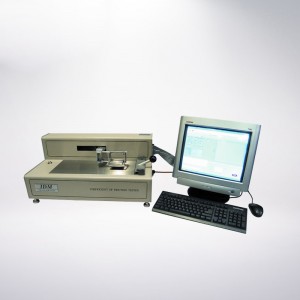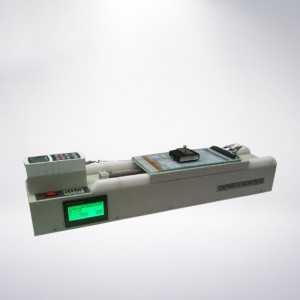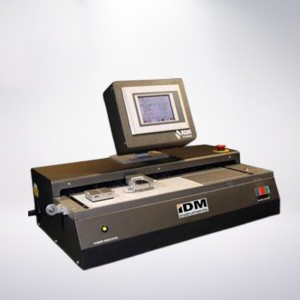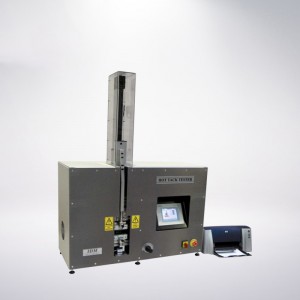C0041 Friction Coefficient Tester
This is a highly functional friction coefficient meter, which can easily determine the dynamic and static friction coefficients of a variety of materials, such as films, plastics, paper, etc.
The coefficient of friction is one of the basic properties of various materials.
When there is relative movement between two objects in contact with each other
Or relative movement tendency, the contact surface produces
The mechanical force that hinders relative movement is friction
force. The friction properties of a certain material can be determined by the material
To characterize the dynamic and static friction coefficient. Static friction is two
The maximum resistance of the contact surface at the beginning of the relative movement,
The ratio of its to the normal force is the coefficient of static friction; the dynamic friction force is the resistance when two contacting surfaces move relative to each other at a certain speed, and the ratio of its ratio to the normal force is the coefficient of dynamic friction. The friction coefficient is for a group of friction pairs. It is meaningless to simply say the friction coefficient of a certain material. At the same time, it is necessary to specify the type of material that composes the friction pair and specify the test conditions (ambient temperature and humidity, load, speed, etc.) And sliding material.
The friction coefficient detection method is relatively uniform: use a test plate (placed on a horizontal operating table), fix one sample on the test plate with double-sided glue or other methods, and fix the other sample after it is cut properly. On the dedicated slider, place the slider in the center of the first sample on the test board according to the specific operating instructions, and make the test direction of the two samples parallel to the sliding direction and the force measurement system is just not stressed. Usually adopt the following form of detection structure.
The following points need to be explained for the friction coefficient test:
First of all, the testing method standards for film friction coefficient are based on ASTM D1894 and ISO 8295 (GB 10006 is equivalent to ISO 8295). Among them, the production process of the test board (also called the test bench) is very demanding, not only the tabletop must be guaranteed The level and smoothness of the product are required to be made of non-magnetic materials. Different standards have different requirements for test conditions. For example, for the selection of test speed, ASTM D1894 requires 150±30mm/min, but ISO 8295 (GB 10006 is equivalent to ISO 8295) requires 100mm/min. Different test speeds will significantly affect the test results.
Second, the heating test can be realized. It should be noted that when the heating test is performed, the temperature of the slider should be ensured to be at room temperature, and only the test board should be heated. This is clearly stated in the ASTM D1894 standard.
Third, the same test structure can also be used to detect the friction coefficient of metals and papers, but for different test objects, the weight, stroke, speed and other parameters of the slider are different.
Fourth, when using this method, you need to pay attention to the influence of the inertia of the moving object on the test.
Fifth, usually, the friction coefficient of the material is less than 1, but some documents also mention the case where the friction coefficient is greater than 1, for example, the dynamic friction coefficient between rubber and metal is between 1 and 4.
Matters needing attention in friction coefficient test:
As the temperature increases, the friction coefficient of some films will show a rising trend. On the one hand, this is determined by the characteristics of the polymer material itself, and on the other hand, it is related to the lubricant used in the film manufacturing (the lubricant is very It may be close to its melting point and become sticky). After the temperature rises, the fluctuation range of the force measurement curve increases until the phenomenon of “stick-slip” appears.
Products categories
-

Phone
-

E-mail
-

Whatsapp
-

Top








